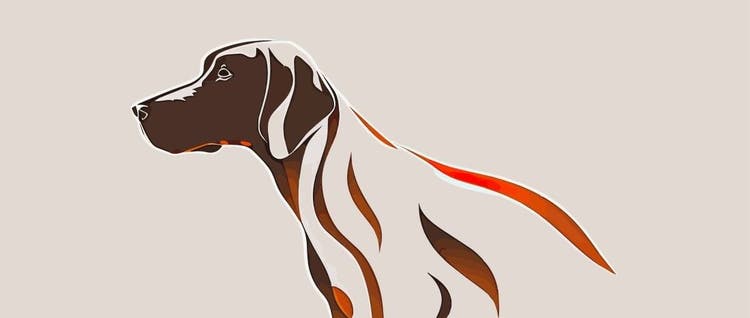
Pets in Famous Art: A Brief History
Pets have always held a special place in our hearts, and throughout history, artists have been captivated by their animal companions. From the Renaissance to the contemporary art scene, cats, dogs, and other animals have played significant roles in some of the most famous artistic masterpieces.
In this article, we’ll take a journey through time and discover how these beloved pets have inspired some of the greatest artists in history. So, get ready to explore the fascinating relationship between animals and art!
Renaissance Art: The Noble Nature of Pets
During the Renaissance, artists like Leonardo da Vinci and Sandro Botticelli included pets in their paintings. These animals were depicted with a noble nature, showcasing their connection to humans and their place within the family.
One famous example is da Vinci’s “Lady with an Ermine,” which portrays a woman tenderly holding a small ermine (a type of weasel). Botticelli’s masterpiece “The Trials of Moses” features a boy with a small dog in the foreground, symbolizing loyalty and faithfulness. The presence of pets in these masterpieces helped create a warm, familial atmosphere that resonated with viewers.
Dutch Golden Age: Showcasing Pets and Their Owners
The Dutch Golden Age was a time of prosperity and cultural advancements in the Netherlands, and artists such as Rembrandt and Steen frequently included pets in their portraits. Pets, especially dogs, were seen as symbols of wealth and status and were often showcased alongside their owners.
In Rembrandt’s “The Night Watch,” a small dog appears at the edge of the scene, emphasizing the camaraderie among the subjects of the painting. In Steen’s “The Merry Family,” a dog is featured in the center, surrounded by their owners. These artworks demonstrate how pets were seen as important members of the family and part of everyday life.
Impressionism: Pets as Charming Companions
Impressionist artists, such as Pierre-Auguste Renoir and Édouard Manet, focused on capturing the charm and personality of pets in their artwork. They often used loose brushstrokes and bright colors to create a sense of movement, bringing cats and dogs to life on the canvas.
Renoir’s painting “Luncheon of the Boating Party” features a small dog at the center of the scene, exuding an air of playfulness and joy. Manet’s portrait of Bob, a scruffy brown pup, shows the dog’s lovable personality and endearing expression. These pieces demonstrate how animals can be charming companions and bring warmth and joy to a painting.
Post-Impressionism: Abstract Depictions of Pets
In the Post-Impressionist era, artists like Paul Gauguin and Henri Rousseau turned their attention to depicting cats and other animals in a more abstract style. They used bold colors, distorted shapes, and exaggerated features to create whimsical scenes that blended reality with fantasy.
Gauguin’s painting “Arearea” features a large red dog in the foreground, juxtaposed against a dreamy landscape. Rousseau’s “The Tabby” shows an abstract version of a cat, with exaggerated features. These artworks demonstrate how post-Impressionist artists used imaginative techniques to portray pets.
Pop Art: Pets as Modern Symbols
The Pop Art movement of the 20th century focused on popular culture and mass media. And pets, as iconic symbols of modern life, played an important role. Andy Warhol and Roy Lichtenstein, two famous Pop artists, often featured pets in their works.
Warhol’s “25 Cats Named Sam” series showcases a playful and stylized approach to pet portraiture. Lichtenstein’s “Grrrrrrrrrrr!!” is a comic book-style painting that portrays an angry dog glaring at the viewer. These artworks show how pets can be powerful symbols of contemporary life and culture.
Contemporary Art: The Evolving Role of Pets
In today’s contemporary art scene, artists like David Hockney, Banksy, and William Wegman examine the complex connection between people and their pets, showcasing the changing roles of animals in society. Through various styles and mediums, pets are portrayed as loyal companions, social commentators, and sources of emotional support.
David Hockney’s paintings of his dachshunds, Stanley and Boodgie, capture their unique personalities and the special bond he shares with them. Banksy, known for his thought-provoking street art, uses pieces like “Choose Your Weapon” to highlight social issues surrounding pet ownership.
William Wegman, on the other hand, showcases the versatility and adaptability of his Weimaraners through playful photographs in imaginative settings and costumes. These artists emphasize the enduring connection between people and their pets, illustrating their significance in various aspects of our lives and society.
Are You Ready to Celebrate Pets in Art?
From the Renaissance to the contemporary art scene, cats and dogs have captured the hearts and imaginations of countless artists. Their presence in art masterpieces serves as a testament to the enduring bond between humans and their furry companions. These paintings and drawings not only showcase the beauty and charm of pets but also highlight their symbolic significance in our lives.
As we continue to appreciate the rich history of pets in artwork, we can also recognize the inspiration they provide for artists today. Whether they’re portrayed as symbols of love and loyalty, or simply as charming companions, cats and dogs have a timeless appeal that resonates with viewers from all walks of life.
So, the next time you visit an art museum or gallery, keep an eye out for the cats and dogs that grace the canvases. These loving pets have been there all along, patiently waiting for us to notice their unique contribution to the world of art. And who knows, maybe your own furry friend could be the muse for the next great masterpiece!